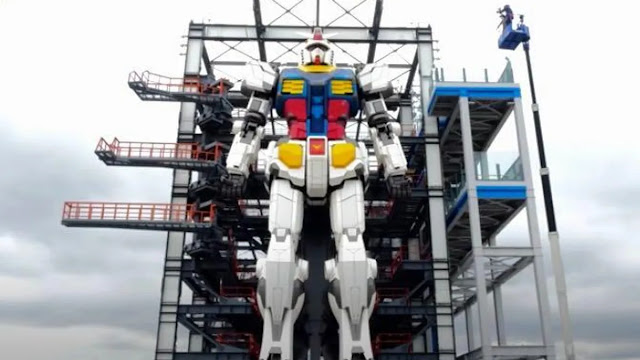The Evolution of Virtual Reality: From Gaming to Everyday Use
Introduction
Virtual
Reality(VR) has advanced a long way since its launch, transcending its roots in
the world of gaming to find exercises in different aspects of our day-to-day
lives. What was formerly considered a niche technology for gamers has now
developed into a transformative force with possible uses in fields as different
as education, healthcare, entertainment, and remote work. In this blog, we will
take a trip through the growth of virtual reality, exploring how it has
expanded from its gaming origins to take a share of our everyday reality.
The Early
Days: VR in Gaming
The
conception of virtual reality has been for decades, but it indeed gained
traction in the 1990s when the first rudimentary VR systems came up in the
gaming world. These early VR gests were characterized by big headsets,
introductory illustrations, and limited interactivity. Gamers were agitated
about the immersive prospect of VR, even though the technology was far from
perfect.
The Rise of
Immersion
As technology
enhanced, so did the absorption factor of virtual reality. Companies like
Oculus, HTC, and Sony started developing further sophisticated headsets and movement-tracking
systems. These advancements brought gamers closer to their digital worlds,
making it possible to explore virtual realms with an unknown degree of
literalism.
Beyond Gaming:
VR in Different Diligence
While gaming
remained a significant driving force behind VR development, the technology
started spreading out into other sectors. One of the foremost cases was virtual
tourism, allowing druggies to explore fantastic spots from the comfort of their
homes. The medical field also began using VR for training simulations, surgical
planning, and remedy sessions:
1. Education
and Training
Virtual
reality has the implicit to transfigure education and training by delivering
immersive and interactive literacy gests. Scholars can explore literal events,
visit distant spots, or share in simulated trials, making learning further
engaging and poignant. VR is also astronomically used for training purposes,
analogous to medical simulations, military training, and artificial safety
drills.
2.
Architecture and Design
Virtual
reality has grown as a priceless tool for masterminds and contrivers. It allows
them to induce virtual walkthroughs of structures and spaces, enabling guests
to feel and fantasize about designs before construction begins. This
helps in better decision- timber, detecting design blights, and creating more
accurate representations of the final product.
3. Healthcare
and Therapy
Virtual
reality has introduced operations in healthcare and remedy, offering innovative
results for pain operation, cerebral health treatment, and recovery. Cases can
be immersed in calming surroundings or guided through virtual scripts designed
to relieve anxiety and stress. VR is also employed for physical remedy
exercises, delivering interactive and engaging recovery gests.
4. Trip and
Tourism
Virtual
reality has the authority to transfigure the trip and tourism assiduity by
furnishing virtual tenures and experiences. Druggies can explore destinations,
milestones, and lodestones nearly, abetting them in making informed trip
judgments. VR can transport individualities to fantastic spots, delivering a
taste of what it's like to be present in a different venue, and enticing
implicit excursionists.
5.
Collaboration and Communication
Virtual
reality has the implicit to transfigure how we unite and communicate. VR platforms
permit individuals to meet and interact in a virtual place, regardless of their
physical position. This opens up new possibilities for remote work, virtual
gatherings, and immersive social gests, bringing people together more engagingly and interactively.
6. The
Entertainment Industry
The
entertainment assiduity has fully embraced VR. Beyond gaming, VR gests offer an
entirely new form of entertainment. Druggies can watch flicks or musicals from
the relaxed seats in the house, or indeed step inside their favorite stories
through interactive VR liars.
The Future of
Virtual Reality
As virtual
reality continues to develop, its eventuality for everyday use is getting
gradationally apparent. Stoked reality (AR) is also blending with VR, creating
mixed reality gests that blur the line between the physical and virtual worlds.
As technology is perfecting, VR headsets are getting cheaper, more comfortable,
and are available for more people. This vacuity, along with the expanding range
of its uses, suggests that virtual reality will continue to weave itself into
the fabric of our day-to-day lives.
The future of
virtual reality holds the pledge of further realistic and immersive gests. As
the technology progresses, we can anticipate enhanced visual quality, amended
haptic feedback, and more intuitive stoner interfaces. Virtual reality may come
up as an integral part of entertainment, communication, education, structure,
automotive design, remedy, and other aspects of our lives.
Conclusion
Virtual reality has come a long way from being solely associated with gaming. Its development has seen it expand into different diligence, offering immersive gests and practical exercises beyond entertainment. From education and training to healthcare and trips, VR is changing the way we learn, experience, and interact with the world around us. As technology continues to advance, virtual reality holds tremendous prospects to be an integral part of our everyday lives, enhancing our gests and opening up new possibilities.



Comments
Post a Comment